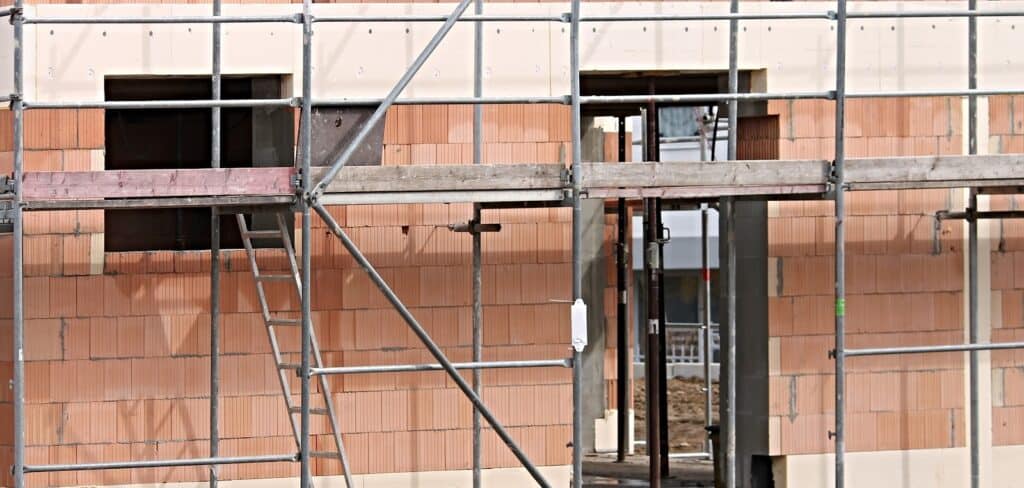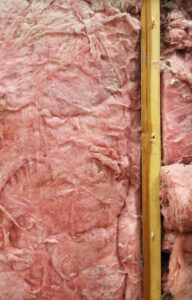There are several things to consider when soundproofing. One of which is complying with the Part E building regulations. This blog will talk through these regulations and how to comply with them.
The regulations
The Part E building regulations set out requirements that all new homes and conversions must meet. The aim is to lessen noise transmission between homes and within a building. Noise pollution is proven to have negative health effects and is a major cause of disputes between neighbours.
Within the regulations, both airborne and impact sound is discussed.
Airborne sound
Airborne sound is the noise that travels through the air. Part E building regulations state that the minimum level of airborne sound resistance for dividing walls or floors between homes is 43db for conversions. For new builds it is 45db. This level allows noises of talking, TV and music to be cut out.
The internal airborne sound resistance within a home must be a minimum level of 40 dB. This applies to walls and floors between rooms. There is an exception for walls with doors in.
Impact sound
Impact sound is when one object hits another resulting in noise travelling through the building. For example, dropping something or footsteps. For the floors and stairs of a new build, the impact sound levels must be a maximum of 62 dB. For conversions a maximum of 64db.
Following these requirements protects future residents from being impacted by noise from other properties. As well as noise from within the building itself.
How to prove you have met Part E building regulations
To prove compliance, you will need to get a sound insulation test. It tests whether the level of soundproofing in the property is in accordance with the Part E building regulations. How exactly the test is carried out can be affected by the size of the building. However, a small to medium-sized building would usually have two airborne wall tests, two impact floor tests and two airborne floor tests.
To pass the test, the following areas need to be appropriately soundproofed:
- Upper floors
- External walls
- Masonry dividing walls
- Internal stud walls
Soundproofing upper floors
Upper floors will need to meet the minimum requirement set by Part E building regulations of 40db. Typically, the traditional upper-floor structure will not be able to do this on its own. What can be done is add insulation around the joists. A minimum of 100mm of mineral wool with a minimum of 10kg/m3 density. Another option is using a more substantial plasterboard, as long as it has the same mass as the insulation.
These regulations are required for bedrooms only; however, doing it across the whole floor will make the building process easier.
Soundproofing external walls
External sound insulation is not a requirement of the Part E building regulations. However, it is recommended for the sake of privacy and peace. One of the ways you can do it is by using mineral wool slabs to insulate between the wall studs. Then a double board with a fire-rated plasterboard lining. This will soundproof and make the external walls resistant to fire.
Soundproofing masonry dividing walls
A masonry dividing wall will need two pieces of pointed-up dense blockwork to be built. The cavity is then filled with mineral fibre. A useful addition is using a sound-grade plasterboard which will improve sound resistance to over 50db. A thermal layer can be applied before plasterboarding for extra thermal insulation.
Soundproofing internal stud walls
For stud walls, you will need a double timber stud compartment wall with at least a 240mm width cavity. Between each stud is filled with semi-rigid mineral wool insulation, which should then result in appropriate soundproofing to pass the Part E building regulations.
When to get a test
Part E building regulations state that you must get a sound insulation test if you are:
- Building a block of flats
- Building a hotel or hostel
- Building terraced or semi-detached houses
- Converting a building so there will be more dwellings than previously
Testing is not required on detached dwellings and refurbishment projects. The testing must be done before completion to demonstrate the dwelling is in accordance with the regulations.
Air Tightness Solutions
At Air Tightness Solutions, we provide sound insulation testing for the Part E building regulations. We work with you to ensure that you have the highest chance of passing. Through an on-site consultation, we can advise you on exactly how to meet the requirements. If you are unsure if your project will need testing, we are happy to give guidance.
To find out more get in touch with us today.






